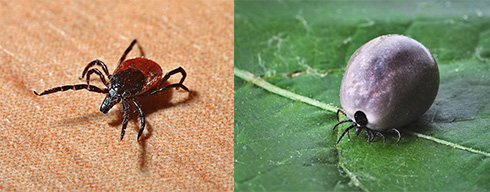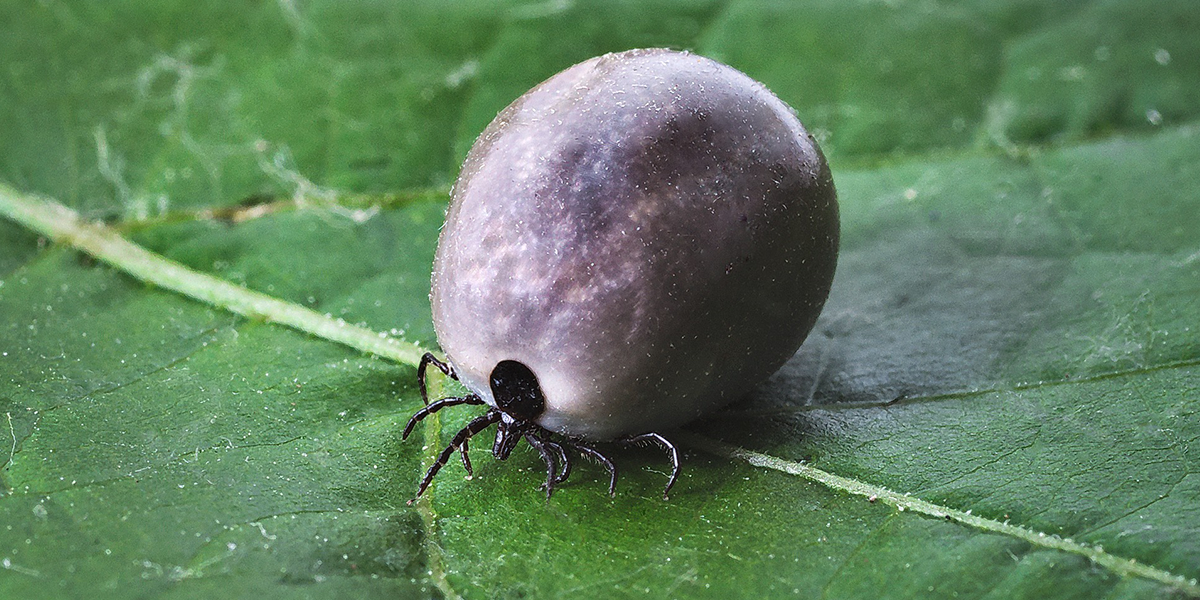Cats with access to the outdoors may be exposed to ticks. Ticks are known as ‘ectoparasites’, meaning external parasites, because they live outside of the host, ie, on the skin, apart from their mouthparts which become embedded inside the host in order to feed on their blood. Tick attachment can lead to skin irritation, and ticks can transmit a number of diseases to cats; heavy infestations can cause anaemia.

Cats can be protected from ticks by a spray or spot-on treatment – speak to your vet about this. Even when using one of these products it is important to check your cat on a regular basis for the presence of any ticks.
If you find any ticks on your cat, it is very important to remove the tick, and that this removal is carried out correctly. Incorrect removal can result in the mouthparts of the tick (which are fixed firmly in place using microscopic barbs) remaining inside the cat, or squeezing fluids from the tick into the cat, both of which can lead to infection and/or skin reaction.
As ticks can carry infectious diseases, it’s safest to wear gloves, eg, latex or rubber gloves, when removing a tick. You can use a pair of tweezers to remove the tick; fine-tipped tweezers work best. However, there are specialist tick-removal devices available, sold at pet shops and vet practices, which make it easier to remove a tick safely and successfully.
Specialist tick-removing devices
There are commercial devices available to help you remove a tick more easily. A study* published in the Veterinary Record in 2006 compared the use of three different commercial types of tick-removal devices by owners when removing ticks from their cat or dog. One device was found to be significantly better in that, compared to at least one of the other two devices, owners found it easier to grab on to the tick using this device, that they needed less force to remove the tick, it was quicker to remove the tick, the risk of totally severing the tick’s mouthparts was reduced, and their pet showed less of a reaction when the tick was being removed. This device used a ‘slit and rotation’ mechanism. The slit in the device is placed around the head of the tick, and a curve in the device cups the tick’s abdomen, which reduces the pressure exerted on the mouthparts, making it safe to employ a twisting action in order to ‘unscrew’ the barbed mouthparts from inside the cat. The device is to be rotated (ie, twisted) in one direction (either clockwise or anticlockwise, it does not matter which) to remove the tick. An example of this type of device is the O’Tom Tick Twister®.
Removing a tick
Follow the advice below to help you safely remove a tick; if you are at all concerned about removing it, then speak to your vet for help and advice.
Be calm
Always be calm, gentle and reassuring around the cat.
Have help at hand
You may find it helpful to have someone to hold the cat while you remove the tick.
Have everything you need at hand
Have everything you need with you so you can work quickly to minimise any distress to the cat.
Find a suitable place
Choose somewhere suitable to place your cat when removing the tick. If there are two of you, consider a stable surface which is a convenient height for you to both stand at while removing the tick, such as a table. If you are on your own, you may find it easier to kneel on the floor behind the cat.
Hold the cat
Cats like to have all four paws in contact with the surface they are on, so ensure that this is the case. If someone is helping you, they should gently restrain the cat around the front limbs and shoulders, with the forearms gently restraining the body and the cat’s rear against the helper’s stomach (location of the tick permitting), as illustrated in the picture below. Alternatively, the cat can be held in a side-on position against the helper’s body with one hand around the cat’s shoulders and the other across its body – again the helper’s body is acting as a ‘backstop’ to prevent the cat from backing away. If you are on your own and kneeling, hold the cat in between your knees, to prevent him/her from backing away.
Remove the tick
Tick-removing devices will come with instructions; follow these carefully. If you are using a ‘slit and rotation’ device (described above), place the slit in the device around the head of the tick, then twist the device in one direction (either clockwise or anticlockwise, it does not matter which) to remove the tick. Here is a video showing this process:
Clean the bite site
Clean the bite site using salt water.
Dispose of the tick
Get rid of the tick by crushing it using tissue paper, to avoid coming into contact with any of the tick’s fluids (which may be infectious), and dispose of it safely, eg, flush it down the toilet.
Monitor the cat
Keep a close eye on the bite site for any signs of infection or irritation, and on your cat’s behaviour for any signs of illness. If you are at all worried, seek veterinary advice.
Using tweezers
If you do not have access to a specialist tick-removing device, then use tweezers. If using tweezers, hold these parallel to your cat’s skin, and grasp the tick as close as possible to your cat’s skin, to try to grip as close as possible to the tick’s head in order to avoid ripping the abdomen off and leaving the mouthparts embedded inside the cat, which can cause infection. Be very careful not to squeeze the tick’s abdomen (body) with the tweezers, which may result in squeezing fluids from the tick back into the cat; this can cause infection. Pull the tick upwards with a steady even pressure. Never twist the tick using tweezers, as this risks breaking off the tick’s mouthparts.
*Zenner, L., Drevon-Gaillot, E., Callait-Cardinal, MP. (2006) Evaluation of four manual tick-removal devices for dogs and cats Veterinary Record 159, 526-529.
Thank you for visiting our website, we hope you have found our information useful.
All our advice is freely accessible to everyone, wherever you are in the world. However, as a charity, we need your support to enable us to keep delivering high quality and up to date information for everyone. Please consider making a contribution, big or small, to keep our content free, accurate and relevant.
Support International Cat Care from as little £3
Thank you.
Donate Now



